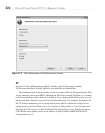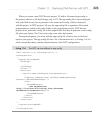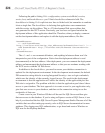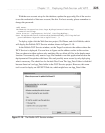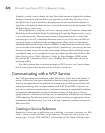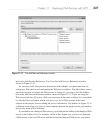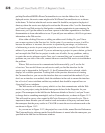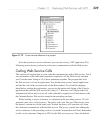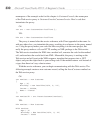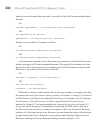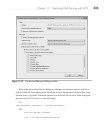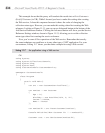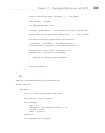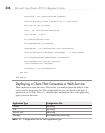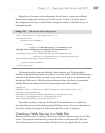
330 Microsoft Visual Studio 2010: A Beginner’s Guide
namespace of the example code for this chapter is CustomerConsole, the namespace
of the Web service proxy is CustomerConsole.CustomerService. Here’s code that
instantiates the proxy:
C#:
var svc = new CustomerServiceClient();
VB:
Dim svc = New CustomerServiceClient
The proxy is named after the service reference, with Client appended to the name. As
with any other class, you instantiate the proxy, resulting in a reference to the proxy, named
svc. Using the proxy makes your code feel like everything is in the same project, but
really the proxy makes a call over HTTP, sending an XML package to the Web service.
The Web service translates the XML into a method call, executes the code for the method
call, and translates the results back into XML. Meanwhile, the proxy is waiting on the
Web service and will receive the XML response, translate that response into a .NET
object, and pass the object back to your calling code. If the method returns void instead of
a type, then there isn’t any value to return.
With the service reference, you can begin communicating with the Web service. The
following example creates a new customer record, calling the InsertCustomer method on
the Web service proxy:
C#:
var newCust = new Customer
{
Age = 36,
Birthday = new DateTime(1974, 8, 22),
Income = 56000m,
Name = "Venus"
};
var newCustID = svc.InsertCustomer(newCust);
VB:
Dim newCust = New Customer
With newCust
.Age = 36
.Birthday = New DateTime(1974, 8, 22)
.Income = 56000



